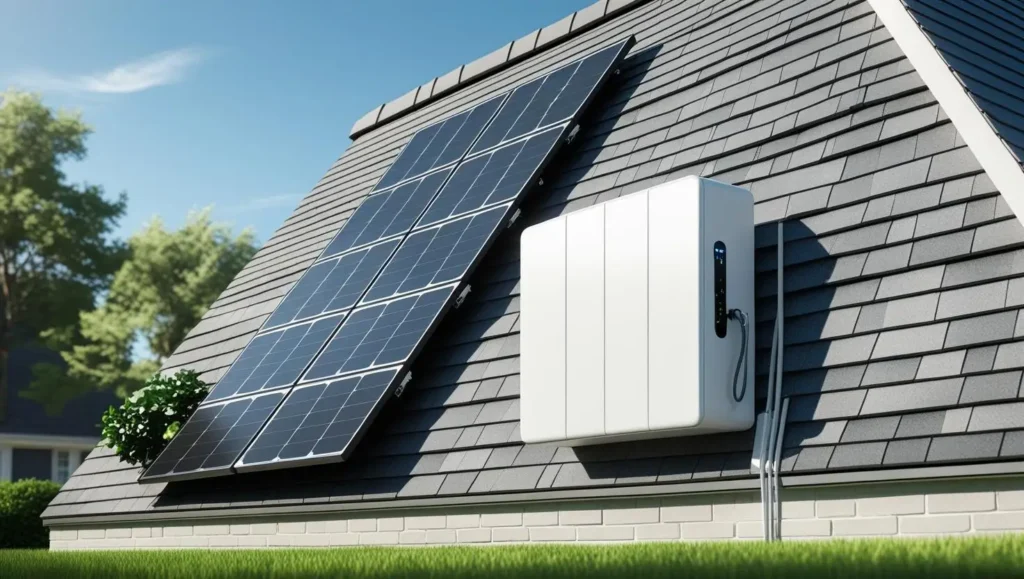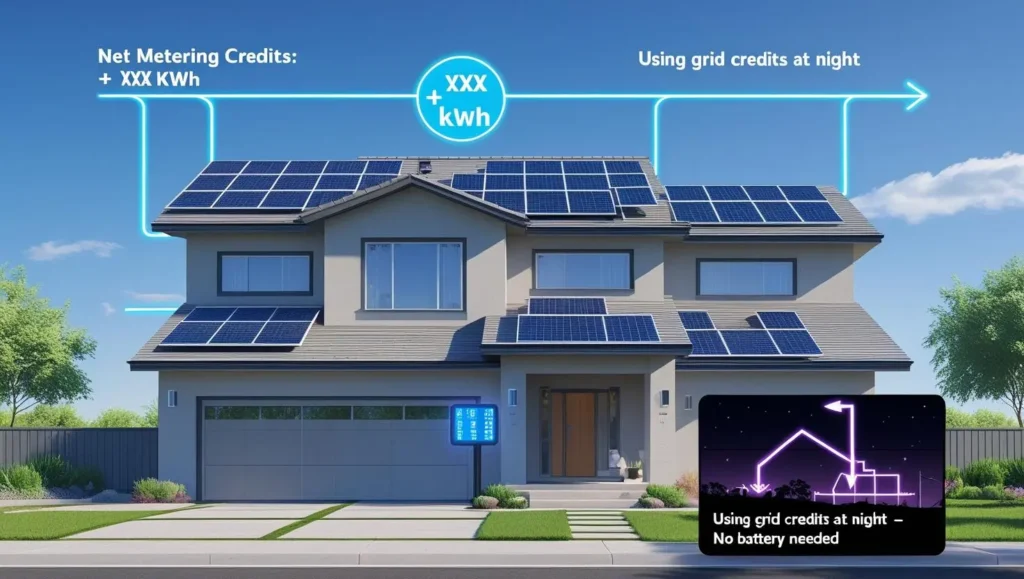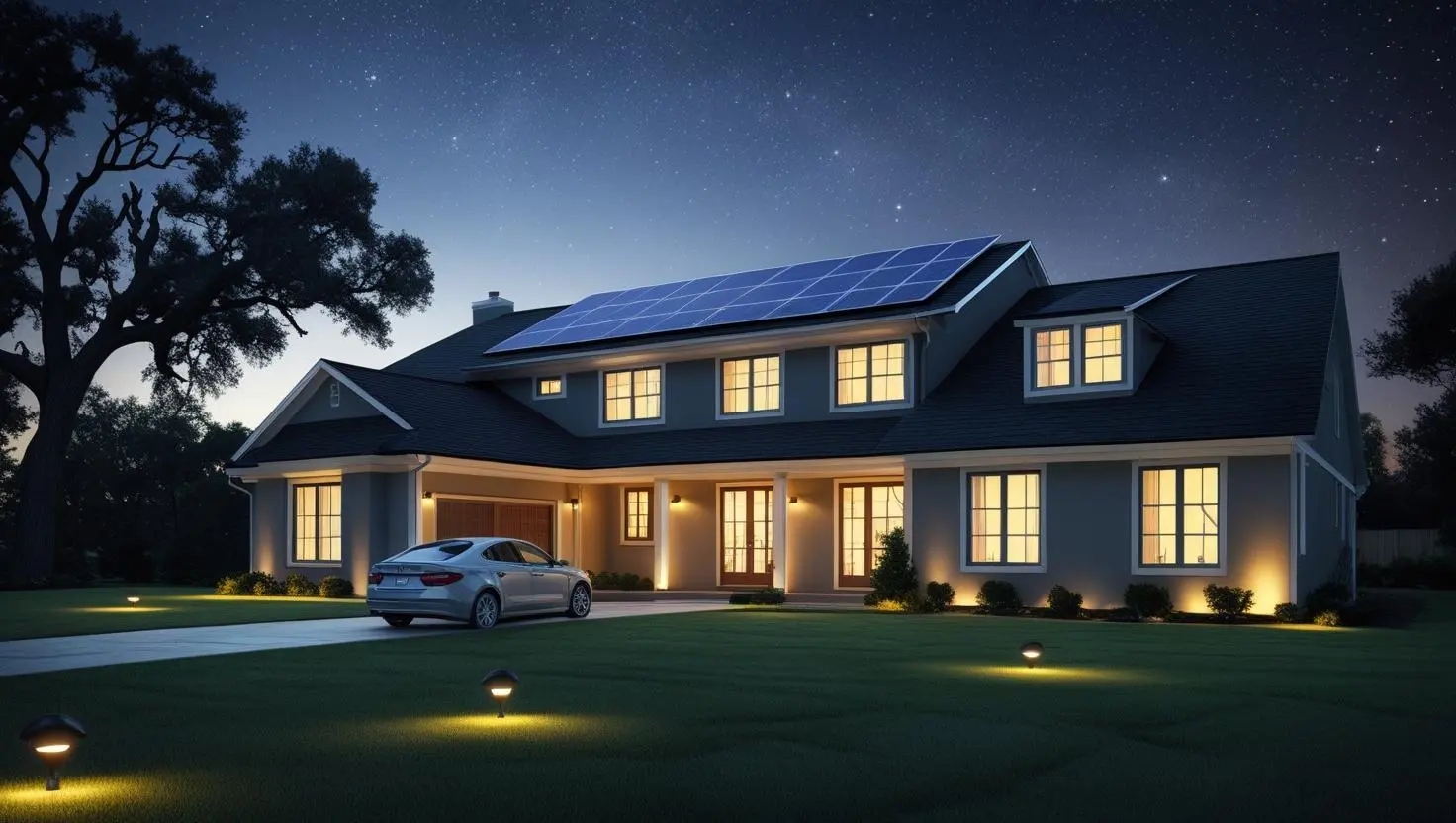Now more than ever, homeowners in the U.S. are considering going solar — or have already done so — but are left wondering, what happens when the sun sets? How do Solar Panels Work at Night? Will your light even stay on?
Short answer: Solar panels do not make use of ambient light during the night. But that doesn’t mean your home is plunged into darkness. With state of the art energy storage systems and even smart utility programs, your solar system could potentially put in work all day long, working at peak efficiency 24/7 day or night.
Here’s what every American homeowner needs to know.
How Solar Panels Work (In Simple Terms)
Solar panel parks can be made possible by deploying photovoltaic (PV) cells, that are known for converting sunlight into direct current (DC) electricity. The inverter changes the electricity from DC to AC, which flows into your house to run everything.
When the sun is shining, this system works wonderful — but because it needs sunlight to be powered, when the sun goes down, then I have got no juice.
Ok, but how are you supposed to have power in the dark?
How Homes Use Solar Power After Sunset
That is where solar systems in the U.S. smarten up. While most setups are built to use solar batteries or net metering, ensuring that your home is powered even when the sun isn’t shining on it.
1. Solar Battery Storage
Your solar panels will collect an energy surplus throughout the day in a solar battery, which stores this excess output.

- During the day your system would produce more energy than you need in your home.
- Others store that surplus energy in a battery (think the Tesla Powerwall or Generac or LG Chem).
- In the evenings, your residence seamlessly transitions to battery power — no grid needed.
This is why homeowners love it: More energy freedom, blackout protection, lower electric bills.
2. Net Metering (Grid Credits)
If you do not have a battery all, then you are probably in a net-metered system (which is available for many U.S. states).

- Excess electricity is fed into the local power grid during the day.
- These bring in credits with your utility.
- Then overnight, when the power you need, you “buy” those credits back — essentially trading your excess energy during daylight sunlight.
Why it matters: The grid becomes your backup — no additional storage system required.
Common Myths: “Solar Panels Are Useless at Night”
Let’s clear that up.
| Myth | Reality |
| Solar Panels going out of order at night = no electricity | False. If you have batteries or net metering, your home continues operating as usual. |
| You always need the grid | False — battery storage can be used to take your Sydney home off-grid in part or fully. |
| In addition solar doesn’t work when it is cloudy either. | Not entirely true. Panels may work on overcast days, but to a lesser extent. |
What About Future Tech? “Nighttime” Solar Cells?
Researchers are developing technologies such as thermoradiative solar cells that could harvest electrical power after the sun has set. While this work is still experimental, it seems to indicate the possibility that this idea could be used to tap the true potential of solar in off-grid or rural areas.
Why This Matters for U.S. Homeowners
In states where there is lots of sun like California, Texas, Arizona and Florida solar can easily end up delivering more power to the grid than your house ever uses in a day when you have a battery or net metering.
But not only is solar energy viable year-round even in colder states like New York, Illinois or Colorado — you can still draw from the grid as backup and save on your utility bill.
Key Takeaways
- Solar panels only produce power when the sun’s shining, and that precious electricity will dissipate in 8 minutes — but you don’t have to sit in darkness until dawn.
- While your daytime solar power is harnessed for use in the night and stored through batteries during this time.
- This is because net metering allows you to consume energy without incurring additional fees for doing so.
- New technologies may eventually allow for nighttime solar generation.
- This helps U.S. homeowners offset the costs and increase energy independence with tax incentives, rebates and energy credits.

